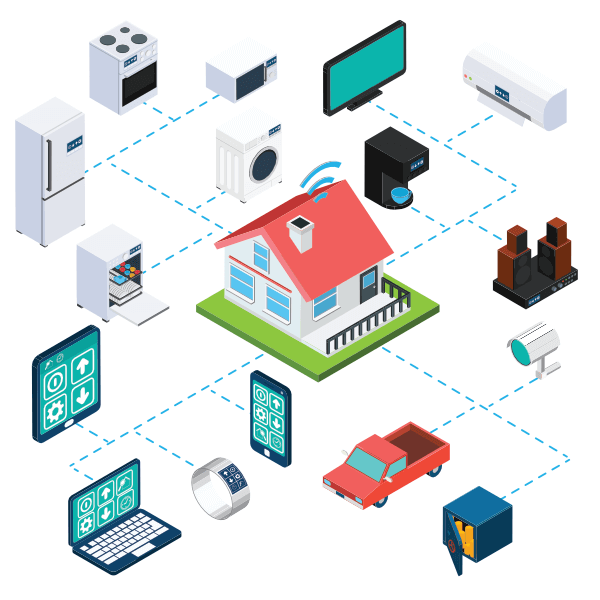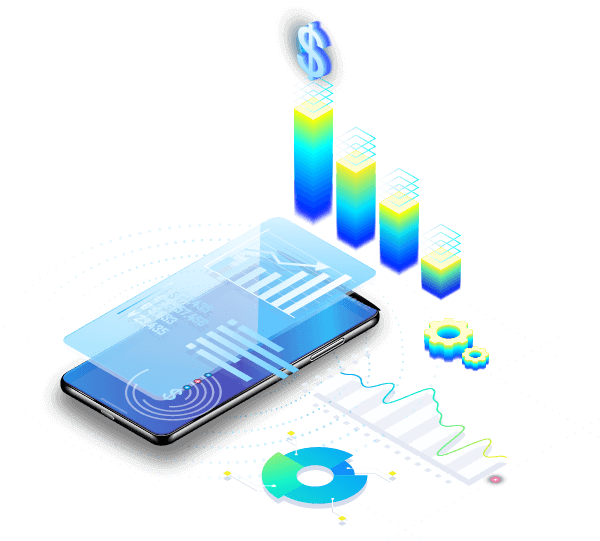IoT Technologies
Connecting everything and changing the world as we know it.
The Internet of Things (IoT) may represent more innovation and change than any other technological development in our lifetime. Instrumenting the world with low-cost sensors is enabling businesses, cities and entire countries to change the way value is created by leveraging meaningful data to transform outcomes, markets, and economies.
Today, IoT is driving advancements across enterprise and industrial markets where it has the potential to streamline operations, deliver time and cost savings and create new services. It is also driving global economic and environmental change with new opportunities for innovation—enabling businesses and citizens to make the world a better place.
An Overview of IoT
In the simplest terms, the Internet of Things (IoT) is how we describe the digitally connected universe of everyday physical devices that are connected (typically wirelessly) to the Internet. These devices often include technology to measure the physical environment (sensors) or change the immediate environment or other devices (like switches or actuators).
The concept of the “smart home” is a good example of IoT in action. “Smart” (i.e. Internet-enabled) thermostats, doorbells, smoke detectors and security alarms create a connected hub where data is shared between physical devices. Homeowners can remotely control the “things” in that hub (ex., adjust temperature, unlock doors, etc.) via a mobile app or website.
The Internet of Things is far from being restricted to homes, and it’s the use in environmental monitoring that Citykinect focuses.


Benefits of IoT
The Internet of Things promises to transform a wide range of fields. In medicine for example, smart temperature sensors are used to monitor the temperature in freezers, refrigerators and temperature-controlled transportation to ensure the safety of blood reserves and vaccines. This eliminates the cost of manual measurements and offers something that a manual process cannot: the ability to react before problems occur via instant alerts if temperatures begin to drift outside the target range.
Another area that’s also experiencing a transformation is urban planning. Sensors placed on a busy street can notify drivers of available parking spots, so they don’t waste time and fuel looking for an empty spot. Smart trash cans can notify the city when they become full, thus optimizing waste collection routes.
The use of smart devices can mean a competitive advantage for businesses that use them strategically. For instance, by tracking data about energy use and inventory levels, a company can significantly reduce its overall costs.
The common theme among all benefits of IoT is the use of data. An enormous amount of data can be easily collected in ways never before possible and can provide insight to revolutionize the way we do things. In the end, reducing costs and energy usage, making business more efficient and making cities safer and smarter are obvious goals, but just the tip of the iceberg.

The IoT Technology Stack
Devices
- Objects which actually constitute the “things” within the Internet of Things.
- Act as an interface between the real and the digital worlds.
- Sensors detect or measure a specific physical quantity and convert it into data via electrical pulses.
- Switches (actuators) receive a signal and sets something in motion to act upon or within an environment (usually using force to turn something on or off).
Communications Network
- Any networking technology used to connect sensors to a gateway and the gateway to the Internet.
- There are various networking technologies available, from short range (Bluetooth, RFID) to medium-range (WiFi, ZigBee, Thread) to long-range.
- In addition to having different ranges they differ by cost, power consumption, and more.
- While multiple technologies may be used in an IoT solution, Citykinect focuses on 3 key LPWAN network technologies: LoRaWAN, CAT-M and NB-IoT.
Gateways
- The gateway between devices and the technologies and environments where the data from IoT devices really get leveraged.
- Used for:
- connectivity aggregation
- encryption and decryption of IoT data (security)
- translation of various protocols
- management and onboarding of IoT devices
- remote control and management
- pre-processing and aggregation of data
Application
- The application is the cloud-based layer that collects, processes and stores data that has been measured by sensors and transmitted through a network.
- Analytic applications analyze the data and show statistics, trends, forecasts, and patterns, allowing organizations to make better decisions.
- “Control applications” control devices. They receive data from one device and use that to control other devices. For example, an office building, when a smoke detector is triggered. The application then signals all lights to switch on and signals an elevator to disable itself (as long as no one is in it and it’s not moving—determined with other sensors).
Long-Range Networking
Several different networking technologies are available and several will usually comprise any given IoT solution. Which technologies are most appropriate depends on several factors including range required but also whether the solution is purely outdoors or not, whether moving elements are involved, costs, required power, battery life, data volumes and frequency, needed bandwidth, needed performance/speed, proven stability, maturity, security and more.
When considering networking technology for IoT projects, the discussion typically focuses on wireless wide-area networking (WAN). The range of a WAN is kilometres, necessary for applications like Smart City projects where IoT devices will be spread across cities, townships, or even across the province.
Typical cellular networks (like LTE) are a common type of WAN, and while commonly understood and provide high data bandwidth, are cost prohibitive, especially in applications where there are a lot of devices that are connected to the network. Power consumption is also too high for battery-powered devices.
